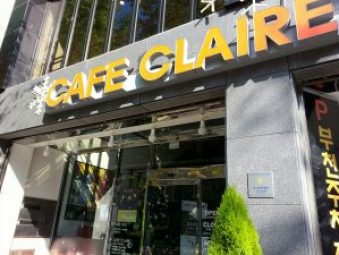How I Discovered Korean Artist Mokwon Hur Whie (and Wish I Knew of Him Sooner)
I knew nothing about Korean art before going to Korea. At one point, I was well-versed in some areas of Japanese art, familiar with masters like Hokusai and Utagawa Hiroshige, and even contemporary artists like Takashi Murakami, Yoshitomo Nara, and Chiho Aoshima.
But I don’t think I knew even a single Korean artist.
Japanese Art in Korea

Seeking Out Art in South Korea
Once I got to Korea, I didn’t start seeking out art until one semester had passed. I visited the Busan Museum of Art (BMA) with high hopes and was disappointed.
None of the art stood out to me, although I saved the museum brochures in the hopes that I might get inspired by them later. Fortunately, the next set of exhibits at the BMA renewed my hope with some really beautiful artwork.
Madame Curie, a video installation by Jennifer Steinkamp stood out as the clear favorite on my second visit, but I also marveled over the precision of Lee Jean Ey/이진이 (Age-7624, oil on canvas, 2013) and the severity of Hwa Jai-Hyoung/황재형 (below).
(The romanization of these names might feel awkward to those who can read Korean. It feels awkward to me. But I stuck with the spellings given by the museum, hoping that these are the spellings the artists prefer.)

I learned peripherally about Korean art movements, through whatever information was available through the museum’s English brochures.
Art in Surprising Places
It turns out Korea has art in a lot of places. Murals on restaurants and small businesses seem to be popular. Whenever there is major construction going on, the temporary walls built around the site are often decorated with public art.
I ran into the art of Mokwon Hur Whie when trying out a new cafe.
Exploring Korea, One Cafe at a Time
Living in a foreign country, I was always exploring new places. That month, I had been working on Nanowrimo – National Novel Writing Month – during which people take on the challenge of writing 50,000 words in one month. So I wasn’t doing as much sightseeing last November, but I was discovering cafes like nobody’s business.


That weekend’s new cafe was called Cafe Claire, a large well-lit space in Seomyeon, one of Busan’s popular hubs that has downtown-like feel.


Cafe Claire not only had your standard cafe fare but also made their own baked goods. And better yet, I was surprised to find that they had a third floor called the Somin Art Center. After finishing up my 1,667 words for the day, I made my way upstairs with carefully concealed excitement.



An Accidental Encounter with Mokwon Hur Whie
There was a cute patio outside and steep steps leading up to a barren looking space. A locked door to my right was supposed to be a theater space, and to the left, a gallery! I was there on the last day of this exhibit:

I stepped inside cautiously, where there was an older man and middle aged woman who welcomed me. One serious visitor stood observing a painting.

The walls were surprisingly colorful, some of them with multiple pieces of art stacked above and beside each other – a massive grid of lines and color. Upon examining a few pieces I quickly realized that all of the art here featured scenes of Busan, many of them places I visited regularly.


Bosu Book Alley; Gukje (International) Market


Jagalchi Fish Market; Songdo Beach
To be honest, this was exactly the type of art that I’d been wanting to do while I was there: artwork capturing and memorializing scenes from my everyday life in Busan, Korea, scenes that to me, as a foreigner who has familial ties to this country, were made all the more exciting.
If I’m completely honest, I did have a moment of creative jealousy. Darn! My idea’s already been done!
But they were done so beautifully. I passed through the space, recalling memories of visiting my grandparents near Gamcheon culture village, delighting in the scenes of Yeongdo, where I commuted to work every day, and smiled at recollections of gathering with friends at Haeundae and Gwangalli beach.

Surprise!
It turned out the old man manning the gallery was Mokwon Hur Whie himself! We chatted in my limited Korean and his limited English about his work. I only got that it was “Korean painting,” and being woefully ignorant about Korean art, didn’t really know what that entailed.
I received his business card, learning that he had a gallery in Gukje Market. He was selling books of his work, and I bought two, thinking that the scenes here would be as meaningful to my Korean mom as they were to me.

It was quite the creatively satisfying day. I never did track down his gallery, located somewhere around Gukje Market, but I’m glad I brought of memento of his work home with me.
All of the images of Mokwon’s artwork were taken from his book, with the exception of one I took directly during this exhibit.
You can see more of his work on his Naver or Daum blogs, or even on his Facebook.